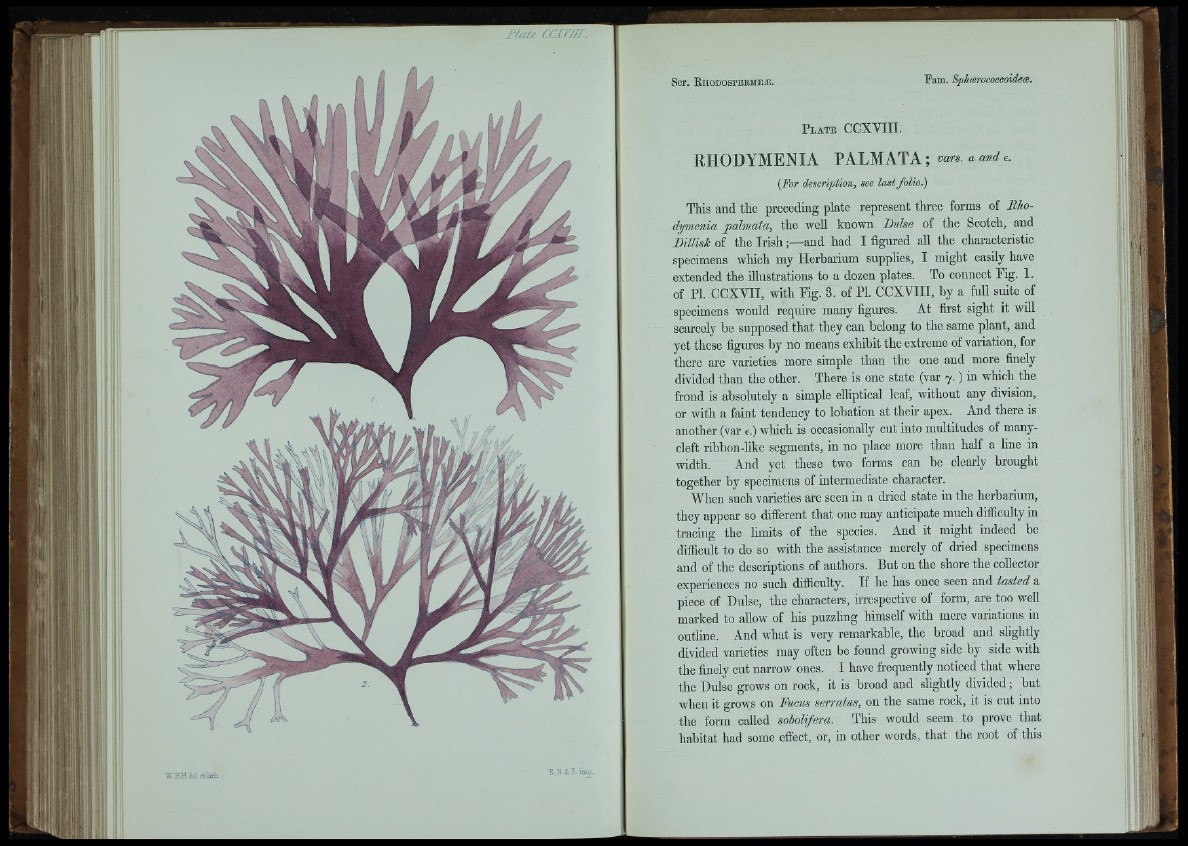
E ;
T O I I l i e t m . ftUi
P l a t e CCXVIII.
R H O D Y M E N I A P A L M A T A ; tiars. a and e.
{For description, see last f o l io )
This and the preceding plate represent three forms of Blo-
dymenia palmata, the well known Dulse of the Scotch, and
Dillish of the Irish ;—and had I figured all the characteristic
specimens which my Herbarium supplies, I might easily have
extended the illustrations to a dozen plates. To connect Pig. 1.
of PI. CCXVII, with Fig. 3. of PI. CCXVIII, by a full suite of
specimens would require many figures. At first sight it will
scarcely be supposed that they can belong to the same plant, and
yet these figures by no means exhibit the extreme of variation, for
there are varieties more simple than the one and more finely
divided than the other. There is one state (var 7 .) in which the
frond is absolutely a simple elliptical leaf, without any division,
or with a faint tendency to lohation at their apex. And there is
another (var e.) which is occasionally cut into multitudes of many-
cleft rihhon-like segments, in no place more than half a line in
width. And yet these two forms can be clearly brought
together by specimens of intermediate character.
When such varieties are seen in a dried state in the herbarium,
they appear so different that one may anticipate much difficulty in
tracing the limits of the species. And it might indeed be
difficult to do so with the assistance merely of dried specimens
and of the descriptions of authors. But on the shore the collector
experiences no such difficulty. If he has once seen and tasted a
piece of Dulse, the characters, irrespective of form, are too well
marked to allow of his puzzling himself with mere variations in
outline. And what is very remarkable, the broad and slightly
divided varieties may often be found growing side by side with
the finely cut narrow ones. I have frequently noticed that where
the Dulse grows on rock, it is broad and slightly divided; but
when it grows on Fucus serratus, on the same rock, it is cut into
the form called sobolifera. This would seem to prove that
habitat had some effect, or, in other words, that the root of this